- Established 1982 -HOME: www.hiltonpond.org
THIS WEEK at HILTON POND Subscribe for free to our award-winning nature newsletter (Back to Preceding Week; on to Next Week) |
MORE FALL MIGRANTS AND A Hilton Pond Center's Bird of the Day for 21 September 2022 undoubtedly was a young Black-throated Green Warbler (BTNW, photo below)--just our 27th banded here in 41 years. All but one of those have been captured during fall migration; the other showed up going north in mid-May.
All text, maps, charts & photos © Hilton Pond Center The adult male BTNW is quite distinctive with his black bib and throat; females and immatures typically lack this feature, as above--although some adult females do show a bit of black on the throat. Look for an olive-greenish back in all ages and sexes (see photo below). This migrant warbler usually nests from the southern Appalachian Mountains north into Canada, but a surprisingly disjunct population raises its young in North Carolina's coastal counties. When fall arrives, all Black-throated Green Warblers bail out for the Neotropics, ending up in Mexico, Central America, northwestern South America, and the Caribbean.
All text, maps, charts & photos © Hilton Pond Center Our lifelong birder-friend Jim Shuman remembers hearing many Black-throated Green Warblers singing from towering spruce trees at the wonderfully remote National Youth Science Camp near Bartow WV. Their call, according to Jim: Zo Zee Zo Zo Zeee. (Alternate song: Zee Zo Zee Zee Zo.) All text, maps, charts & photos © Hilton Pond Center BLACK-SHROUDED MOB We had good news and bad news on the first day of autumn (22 September) at Hilton Pond Center. First, the good: We got outstanding close views of nearly 50 Black Vultures as they flocked to the Center's backyard, apparently attracted to the sight and sound of moving water in a fountain gurgling outside the office widow of our old farmhouse. We always mention in our public presentations the best way to attract birds and other wildlife is to have a water feature to bring in critters faster than food offerings. In this case, we were certainly right! About a third of the black-shrouded mob (below) descended from surrounding trees and farmhouse rooftop to take a drink.
All text, maps, charts & photos © Hilton Pond Center And now the bad news: Black Vultures are big birds with a wide wingspan (up to 5½ feet!), heavy legs, and stout claws (below). They may be graceful in the air but they're somewhat clumsy on the ground, and a few bumbled into our almost invisible mist nets beyond and to the right of the water feature. In fact, for a couple of minutes a pair of them did a jaunty little two-step in the bottom shelf of one net, hopping along the ground and shredding the mesh to pieces where their claws and toes got caught. Needless to say, that net is totally trashed.
All text, maps, charts & photos © Hilton Pond Center After drinking, another Black Vulture took off, got up some air speed, and slammed directly into another net. That big bird passed straight through without slowing at all, making a ragged four-foot-diameter hole that isn't repairable. Yes, vultures are indeed powerful birds that can do a lot of damage to delicate mist nets.
All text, maps, charts & photos © Hilton Pond Center We've always wanted to hold a Black Vulture like the one that perched up close on the deck railing (below); thus, we really hoped one would get snared in a net after destroying it, but that didn’t happen. Just as well, since vultures often throw up when agitated. Worse yet, they seem rather poor at intestinal control, defecating pretty much when and where they please. (Note, for example, whitewash splatters on the plumage of the bird at lower right in our photo above--the likely result of sitting directly beneath some indiscriminate flock-mate at a nighttime roost.) You'll notice the vultures' legs are white where they urinate/defecate on themselves, leaving white uric acid that apparently reflects sunlight and helps keep the vultures' otherwise black legs cool. (Evaporating urine also has a cooling effect.) An alternative and equally valid hypothesis for "urohidrosis" is that Black Vultures use the behavior to counteract potentially harmful microbes that might be present in rotten carcasses they stand in while dining.
All text, maps, charts & photos © Hilton Pond Center The worst part of the vulture onslaught was both these ruined mist nets were of small mesh designed for capturing hummingbirds for our long-term research project on ruby-throats, and small mesh nets are more expensive--to the tune of about $165 or more each if we can find a vendor. That's a big financial hit for the Center (donations welcome)--plus we'll have to break out a couple of mothballed non-hummingbird nets to temporarily replace those the vultures destroyed. Fortunately, hummingbird banding season is almost over for 2022. All text, maps, charts & photos © Hilton Pond Center A HAWKISH HAPPENSTANCE Early afternoon on 26 September we noticed a Facebook post from folks still watching migrant Broad-winged Hawks (BWHA) at Blue Ridge Parkway overlooks in North Carolina. That date is getting late for BWHA—they typically peak in mid-September during their long-distance migration to South America—but we thought we’d stroll down to Hilton Pond to see what might be moving through overhead.
All text, maps, charts & photos © Hilton Pond Center We did quite a bit of hawk-gawking when we worked at Hawk Mountain in Pennsylvania and knew the activity often involves considerable sitting and waiting. So we settled in on a bench on Hilton Pier and started scanning a completely cloudless deep blue sky with binoculars. A wrong-way (local) Turkey Vulture flew past almost immediately but—incredibly—within five minutes an adult broad-wing came sliding over about 100 yards up, black-edged wings pulled in halfway as it aimed due south into a nice southerly breeze.
All text, maps, charts & photos © Hilton Pond Center A serendipitous sighting, this was species #101 for the year for Hilton Pond and the first Broad-winged Hawk seen migrating past the Center in maybe 20 years. (We suspect quite a few BWHA fly over us every fall and that there may even be a few resident pairs in the neighborhood, but we just haven't observed them. The photo just above is an immature we spotted on its wintering grounds in Costa Rica in 2013.) Our solitary broad-wing was nothing like what the big raptor migration sites experience on an regular basis. Sites such as Hawk Mountain and Minnesota's Hawk Ridge may get thousands of BWHA in one autumn day, but our solitary flyover here at home was exciting nonetheless! All text, maps, charts & photos © Hilton Pond Center CALL THE DOCTOR? NOT.
All text, maps, charts & photos © Hilton Pond Center No, Hilton Pond Center's resident bird bander was NOT injured. Let's just say Pokeweed berries and Northern Mockingbirds (immature, below) make for a messy mix. (Good aim, though, with an artistic touch by the mocker.)
All text, maps, charts & photos © Hilton Pond Center WHAT DOES A GROSBEAK EAT? ANYTHING IT WANTS! The Banded Bird of the Day for 28 September at Hilton Pond Center was the immature female Rose-breasted Grosbeak (RBGR) we netted that afternoon. As the photo below shows, there's a reason they call them "gros (big) beaks." This is one of the few species for which we wear gloves when taking up-close photographs, lest our fingers truly be covered with blood (rather than Pokeweed juice as illustrated above). Given a chance, a grosbeak's massive mandibles clamp down on an unprotected knuckle and easily break the skin.
All text, maps, charts & photos © Hilton Pond Center Although RBGR don't breed locally--and only sparingly in the highest elevations of South Carolina--we see them every spring and fall during migration. (Even so, we've banded just 78 here in 41 years.) Rose-breasted Grosbeaks are a pushover for black sunflower seeds, especially when offered at a platform feeder where several individuals may congregate. They also eat a variety of insects--including bees, beetles, and True Bugs--and about any wild fruit or seed they can find.
All text, maps, charts & photos © Hilton Pond Center Females and young males have brown head stripes, as shown--adult males have solid black heads--and the only way to sex immature RBGR is look under their wings. That area is yellow in females (above) and rose-colored in males (below)--characteristics that apply to grosbeaks of any age.
All text, maps, charts & photos © Hilton Pond Center The adult male, of course, has a bright rose-colored patch on his chest (below) that sometimes makes folks think the bird is wounded. Worry not: He's just showing his stuff, apparently to impress a prospective mate with fine plumage that is a sign of good health.
All text, maps, charts & photos © Hilton Pond Center HILTON POND SUNSETS "Never trust a person too lazy to get up for sunrise
All text, maps, charts & photos © Hilton Pond Center Sunset over Hilton Pond, 28 September 2022 After numerous days of perfectly clear skies, we finally got Don't forget to scroll down for lists of Hilton Pond supporters and of all birds banded and recaptured during the period. Photoshop image post-processing for this page employs |
|---|
|
"This Week at Hilton Pond" is written and photographed by Dr. Bill Hilton Jr., executive director of Hilton Pond Center for Piedmont Natural History
|
|
|
Please refer "This Week at Hilton Pond" to others by clicking on this button: |
|


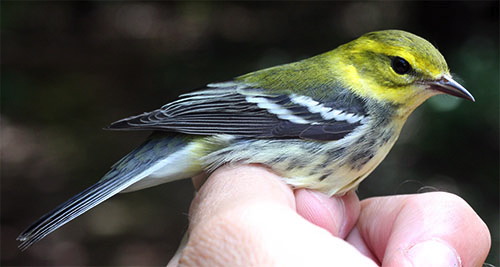

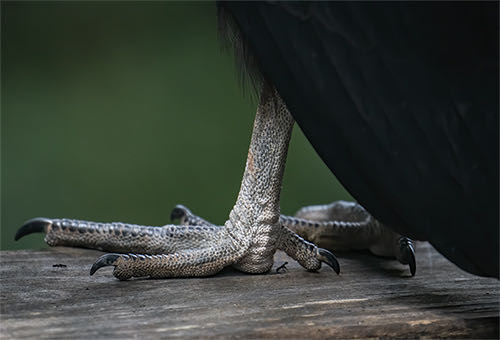



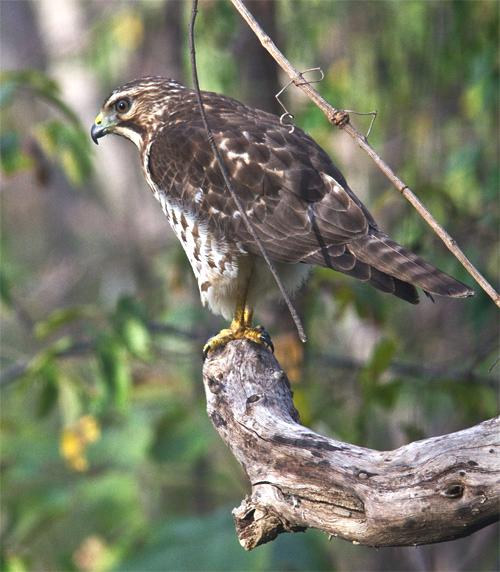



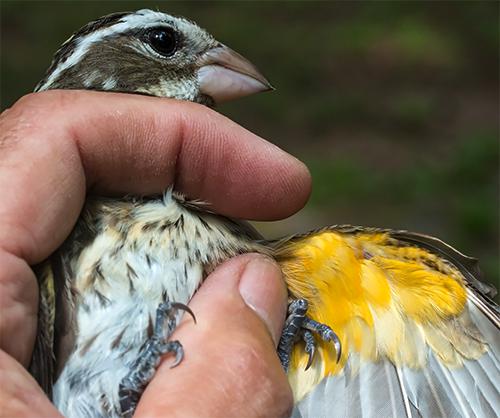
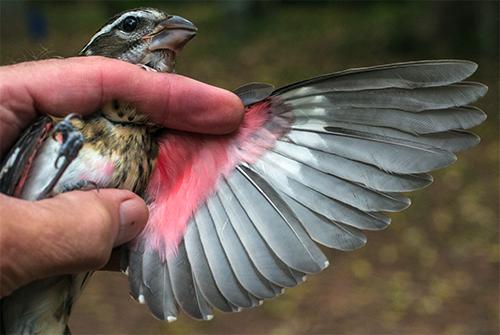
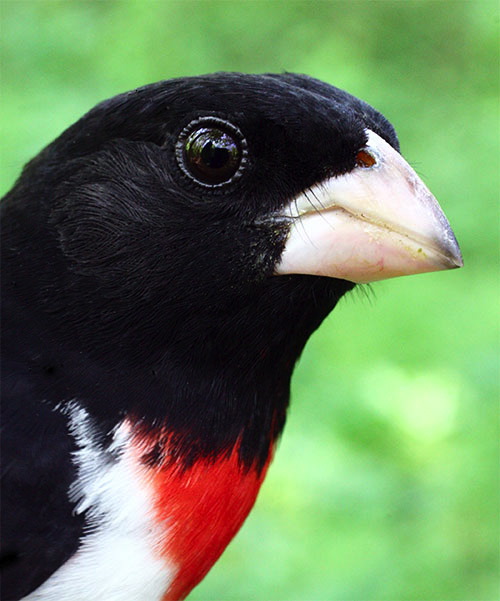










 Please report your
Please report your